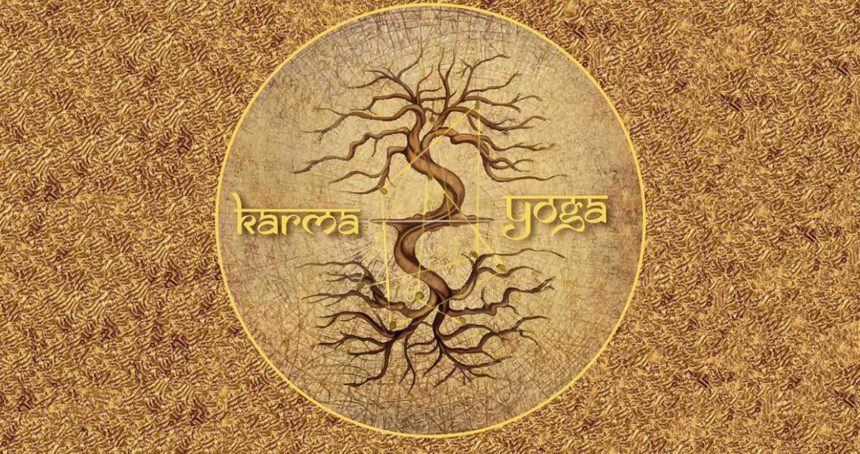A powerful concept for the Karma Yogi though mentioned only once in the Gita.
The concept of Nirashrayatva in the Gita

Everyone in this world wants to be happy. No one wants any suffering, difficulties, pain or infirmity. No one ever does anything with the intention of being unhappy. No one calls for any suffering. We all run after happiness and make every effort to find it. But in spite of this intense craving for happiness, the world continues to suffer and has more occasions to be at pain than to be happy. Why does it all happen? Is there any solution to this? Can the man really be happy? Will it be possible for man to become free from all sufferings? The Gita’s answer is positive. The Gita is perhaps one of the most revered texts, which provides sufficient guidelines for meeting the challenges, for finding solutions to almost all the practical problems of human life. There are many beautiful concepts found in the teachings of the Gita which, when put into practice, can liberate humanity from all its suffering. Therefore, Sri Aurobindo considered ‘the message of the Gita to be the basis of the great spiritual movement which has led and will lead humanity more and more to its liberation, that is to say, to its escape from falsehood and ignorance, towards the truth’.
Among all the key-words of the Gita the word nirashraya is one of the most powerful. The word nirashraya has been mentioned only once in the Gita (see 4:20), but the force with which it is said, and the context in which it is said leads to a deeper understandingnot of not only the nature of true happiness but also the nature of a divine worker. Ordinarily, the word nirashraya has a negative meaning. One would not expect to be blessed with this word which grossly means ‘without support or shelter’, ‘destitute’ etc. But in the Gita, the word is used in a very positive sense. In order to understand the meaning of the word in the light of the Gita, we need to understand not only the context in which it is said but also the karmayoga of the Gita.
The Gita has always stressed on action. It says that it is not by inaction but by action that one attains knowledge and liberation. But the karmayoga of the Gita demands ‘a new birth of the soul into a higher consciousness’. According to the Gita’s teachings, this birth is possible by performing action or doing work with an aim to realize the Divine through work. When the work is done with this attitude then it becomes divine work. And the performance of such divine work leads to the attainment of a new birth. Further, attainment of this new birth is not the end of karmayoga. To continue to work as an expression of this ‘new birth of the soul into a higher consciousness’, is the real karmayoga of the Gita. When the Gita speaks of the performance of the divine works it does not hint upon any particular work and does not distinguish the divine works by any outward signs. The Gita’s way of distinguishing: ‘divine works are all profoundly intimate and subjective; the stamp by which they are known is invisible, spiritual, supra-ethical’, says Sri Aurobindo. It includes all actions in the scheme of its divine work. It insistently says that all actions must be performed, but from ‘a soul in Yoga with the Divine’, yuktah kritsna-karma-krit (4:18). Apart from this, the divine work demands desirelessness, freedom from personal egoism and a perfect equality in the soul and nature. A divine worker is endowed with these four soul qualities.
It is in this context that the word nirashraya has been mentioned in the Gita. When one looks at the general attitude of people towards work, one finds that ordinary work is performed for the fulfillment of certain personal desires with the hope that that it will bring happiness. To the ordinary mind, happiness means the fulfillment of personal desires. When the desire is not fulfilled, man is unhappy and that unhappiness brings all sorts of problems for him. So the happiness which the ordinary man seeks is not the true happiness, because it is dependant on external factors. A perfect inner joy or peace or the true happiness does not depend on anything in the world for its source. It is ‘the very stuff of the soul’s consciousnesses’. The word nirashraya refers to the absence of that dependence (nir-without, ashraya – dependence). One must see carefully that the happiness which he seeks is not dependant on anything. It is this dependence that generates desire, brings anger and passion, breeds pain and grief. When one does work without relying on any external factors, one becomes truly happy, he never suffers, does not grieve for any loss, an eternal contentment pervades him, he becomes nityatripta. He is happy with whatever comes to him, yadrichalabhasantushta. He is not affected by the dualities of pleasure and pain, joy and grief. He lives in a perfect equality in the soul and nature. In all things, he experiences the imperishable Ananda, sukham akshayam ashnute. All these happen when one drops the dependence and becomes nirashraya. If the idea of nirashrayatva can be cherished from the very childhood, the majority of human problems would not even arise.

Leave a Reply